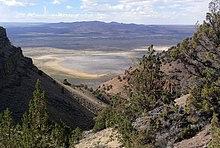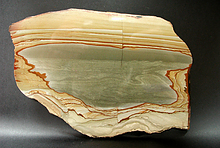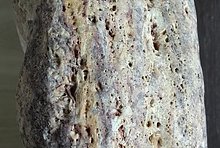Learning CenterWhat is a mineral?The most common minerals on earthInformation for EducatorsMindat ArticlesThe ElementsThe Rock H. Currier Digital LibraryGeologic Time
搜索矿物的性质搜索矿物的化学Advanced Locality Search随意显示任何一 种矿物Random Locality使用minID搜索邻近产地Search Articles搜索词汇表更多搜索选项
╳Discussions
💬 Home🔎 Search📅 LatestGroups
EducationOpen discussion area.Fakes & FraudsOpen discussion area.Field CollectingOpen discussion area.FossilsOpen discussion area.Gems and GemologyOpen discussion area.GeneralOpen discussion area.How to ContributeOpen discussion area.Identity HelpOpen discussion area.Improving Mindat.orgOpen discussion area.LocalitiesOpen discussion area.Lost and Stolen SpecimensOpen discussion area.MarketplaceOpen discussion area.MeteoritesOpen discussion area.Mindat ProductsOpen discussion area.Mineral ExchangesOpen discussion area.Mineral PhotographyOpen discussion area.Mineral ShowsOpen discussion area.Mineralogical ClassificationOpen discussion area.Mineralogy CourseOpen discussion area.MineralsOpen discussion area.Minerals and MuseumsOpen discussion area.PhotosOpen discussion area.Techniques for CollectorsOpen discussion area.The Rock H. Currier Digital LibraryOpen discussion area.UV MineralsOpen discussion area.Recent Images in Discussions
EducationRutile/ilmenite
21st Feb 2012 23:37 UTCDon Saathoff Expert
I'll post a pic later in the week in the identity section....
Don
22nd Feb 2012 03:31 UTCRonald John Gyllenhammer Expert
It will be interesting to see those images if you have time. I only have a couple of thoughts on your question. Actually more questions than thoughts. Are there any other identified minerals associated with the "Ilmenite grains"? Are you confident that your Ilmenite grains are Ilmenite and not Hematite? (I guess the hematite is usually found specular.) If it's definitely Ilmenite, topotaxial or epitaxial Rutile I think could be a possibility. It's a known association elsewhere of course. I think Hematite + Rutile from Taylor Creek rhyolites would not be probable or at least far less likely to be found together there. The only other "yellow to colorless accicular xls" that come to mind from there might be Stellerite. However, if those "Ilmenite grains" are hematite, acicular Pseudobrookite could be a possible association, although Pseudobrookite there doesn't seem to typically form needles (it can and does elsewhere) and the color might not be colorless to pale yellow. Well, this just some speculation I suppose until images are posted. Good luck with it Don.
Ron
22nd Feb 2012 16:44 UTCDon Saathoff Expert
And thanks for the term "topotaxial" - I'd never heard the term before and it's not in my "Dictionary of Geological Terms" BUT, its meaning is obvious and I'll write it in!!!
Don
22nd Feb 2012 17:46 UTCReiner Mielke Expert
22nd Feb 2012 19:36 UTCDon Saathoff Expert
Ron, now I'm confused!!! All references I can find regarding topotaxy concern themselves with intermetallic or bimetallic manufactured junctions. Is the term from a material science discipline?
Don
22nd Feb 2012 20:20 UTCRonald John Gyllenhammer Expert
A discussion on this can get quite involved. Here's an excerpt of a relevant public discussion between J. White and P. Williams along with a link to the page. You may find the entire thread interesting as a whole.
"The terminology of epitaxy is somewhat messed up. Epitaxy proper refers to two-dimensional relationships. There is a term, monotaxy I think, for one dimensional relationships, but it's not obvious that anyone has come up with a good example. Syntaxy refers to three-dimensional similarities, but the term is also used in other geological contexts to mean quite different things, related to cementation of grains in sandstone, for example. Topotaxy also refers to three-dimensional similarities (usually, at least) but also carries the connotation of a phase change - for example conversion of ilmenite to oriented rutile mats by leaching of iron and recrystallization of rutile at an atomic scale such that the orientation between rutile and ilmenite is preserved even after the ilmenite is gone. Most folks use epitaxy to refer generally to all of these kinds of oriented relationships; I do, and I think John does too." - Pete Williams Source: http://www.mineral-forum.com/message-board/viewtopic.php?t=429&start=0&sid=f8e219aec622591c8cdcfc390606bfba 3/4 down the page. Hope this helps.
Ron
EDIT: It's worth noting that there are also other interpretations as well. One of my longtime favorite articles written by J. Rakovan can be found here. http://www.cas.muohio.edu/~rakovajf/WTTW%20Epitaxy.pdf
23rd Feb 2012 00:14 UTCDon Saathoff Expert
Don




版权所有© mindat.org1993年至2024年,除了规定的地方。 Mindat.org全赖于全球数千个以上成员和支持者们的参与。
隐私政策 - 条款和条款细则 - 联络我们 - Report a bug/vulnerability Current server date and time: 2024.4.26 07:41:04
隐私政策 - 条款和条款细则 - 联络我们 - Report a bug/vulnerability Current server date and time: 2024.4.26 07:41:04










